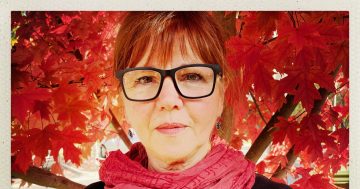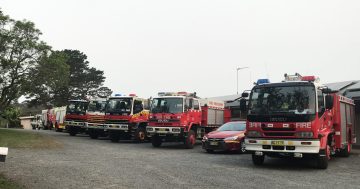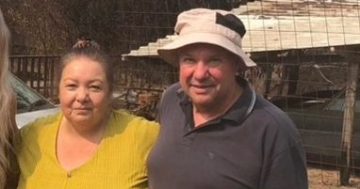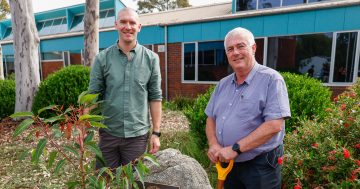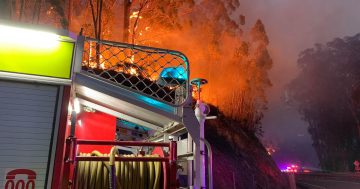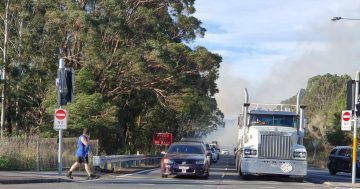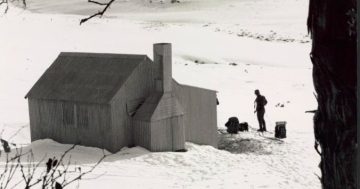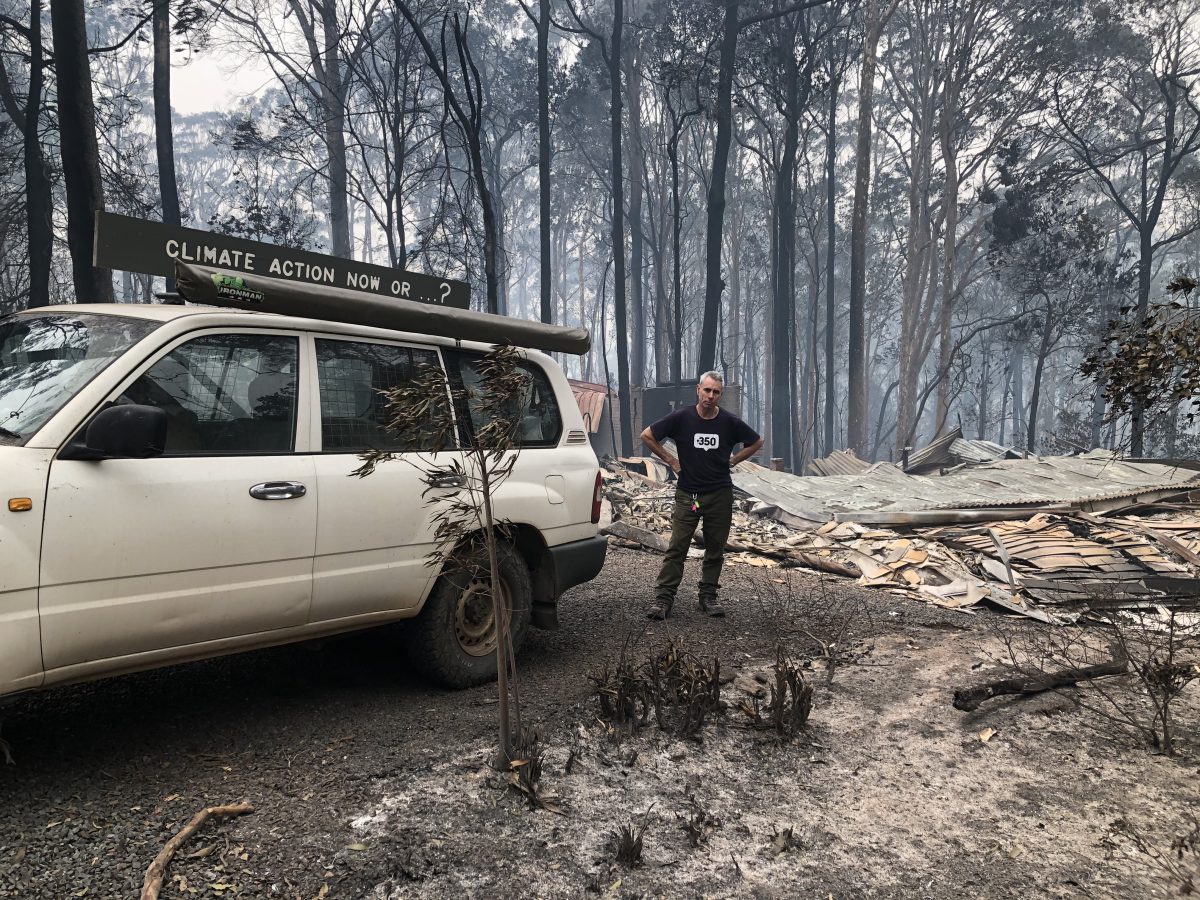
Jack Egan stands among the wreckage of his North Rosedale home after the Black Summer bushfires. Photo: Cath Bowdler.
Jack Egan can still remember fighting the flames outside his home during the Black Summer bushfires when “embers as big as your forearm would blow past horizontally”.
The fires ultimately destroyed his home in North Rosedale, just south of Batemans Bay, on New Year’s Eve 2019.
But five years later, he and his partner Cath Bowdler have rebuilt, are recovering and he is again calling for action on climate change following the release of the recommendations from the NSW coronial inquiry into the fires.
“The worse we let climate change get, the more complex and expensive our response and adaptation measures to climate-driven disasters will need to be,” the Bushfire Survivors for Climate Action board member said.
Mr Egan said he and his partner had prepared their home before waking at 6 am that New Year’s Eve morning to a message saying the fire was heading their way and to activate their fire plans.
But when the firestorm came it was “a real surprise” as it hit them from the east, from the direction of the ocean. Ms Bowdler evacuated with their dog to the beach while he stayed to put out spot fires as he had experience from being in a fire brigade.
But he had to seek shelter in his home when the situation became too dangerous outside as his hoses melted, his fire pump burned and the house next door went up.
“I saw that our house would burn down,” he said.
Mr Egan escaped through a window to a nearby house, where he sheltered until it was safe to help put out spot fires.
“I saw our house was fully alight and there was nothing I could do about that,” he said.
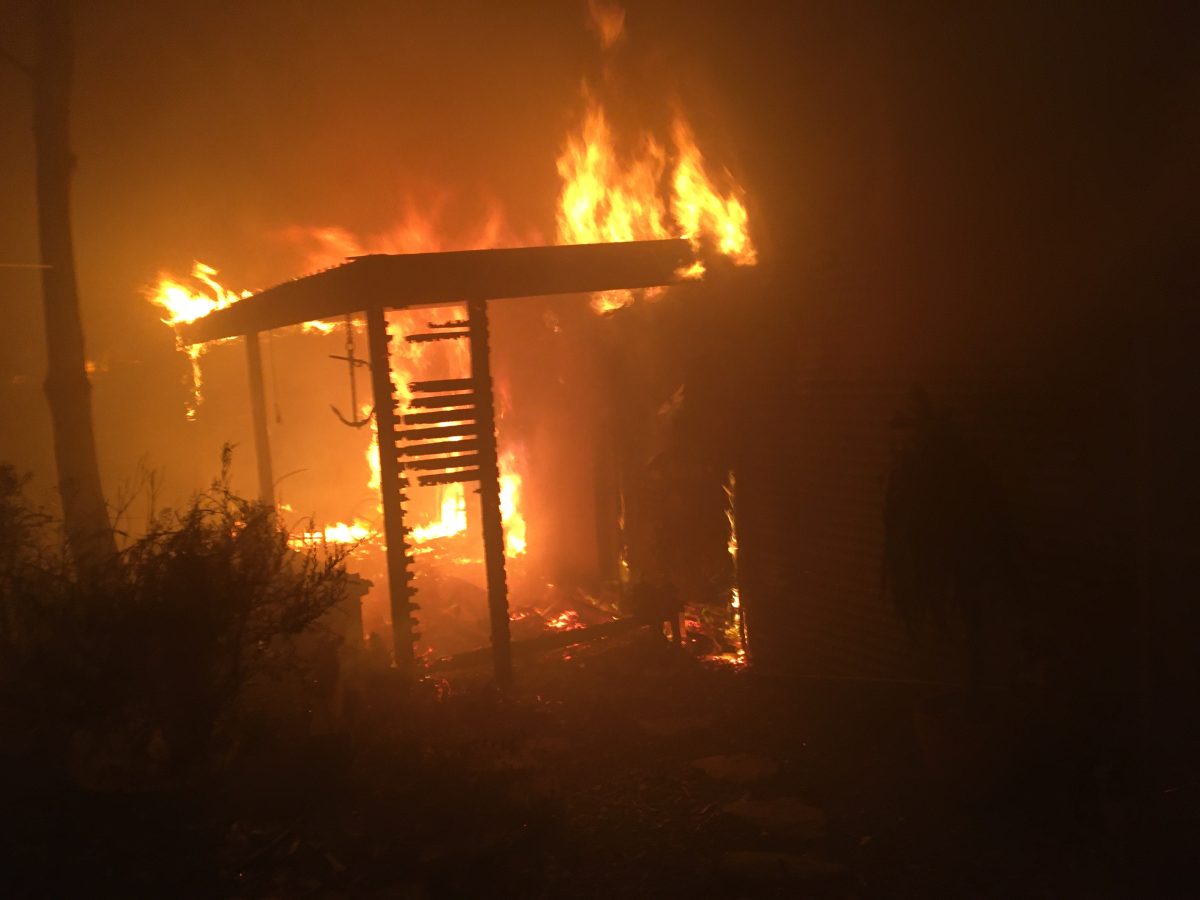
Tragically, Jack Egan saw his home in North Rosedale catch fire during the Black Summer on New Year’s Eve 2019. Photo: Supplied.
A terrifying couple of hours followed when he had trouble finding Ms Bowdler again, but the two were eventually reunited.
“I thought she might have died when I couldn’t find her at our agreed haven,” he said.
He said that out of the 76 dwellings in North Rosedale, 56 of them burnt down. Three homes of permanent residents, including his, burnt on his street.
“What hit us that morning does very much fit the description of a pyro-cumulus event,” he said.
“It’s really dangerous and they’re becoming much more common … because of climate change.”
After the fires, a photo of him (seen at the top of this article) with a sign on his car saying, “Climate action now or …?”, was picked up by the media straight away and he started giving interviews to many news outlets from as far away as Brazil, Sweden and Portugal.
“There was a lot of strong interest in what was happening, because of the link with climate change I think,” he said.
“I had a voice and I could feel in my guts that this was a really dangerous future we were heading into and I wanted to do what I could to help redirect the world so as few people as possible had to go through the experience that Cath, I and so many others had to go through.”
He and Ms Bowdler were able to use their insurance to rebuild on the same property and have incorporated features like rooftop sprinklers that don’t need mains electricity, stainless steel roller shutters, a protected water tank and a well-managed area around the house.

Cath Bowdler and Jack Egan stand in front of their burnt home in North Rosedale. Photo: Supplied.
After enduring such an experience, he now has advice to share about bushfire preparation.
He said his written fire plan was useful, as “anything that wasn’t written down didn’t happen” due to his and his partner’s heightened state as the bushfire approached.
Also, check out local places to evacuate to, be able to protect yourself from radiant heat, remember being in a building is safer than a car, but also think about how to get out of a building. He was unable to open the wooden doors of his home to escape as they had warped from the heat, which is why he went out of a window.
“I don’t recommend to anybody that they stay and defend, that’s a personal decision. These new fire conditions, these pyro-cumulus type events, are making fires really hot, extreme and very dangerous and unpredictable,” he said.








